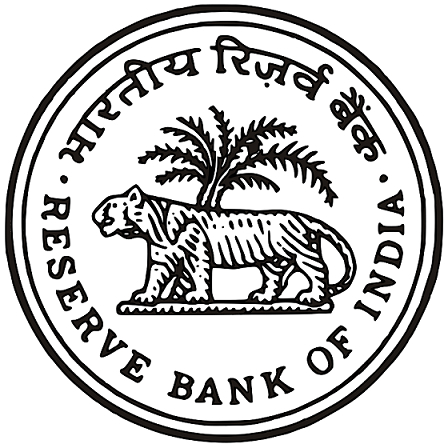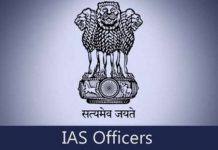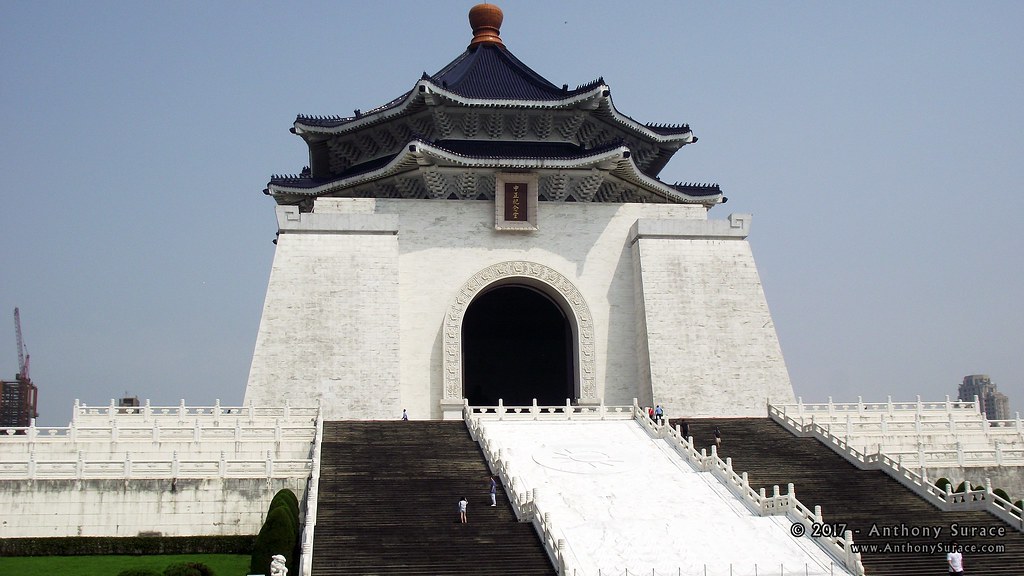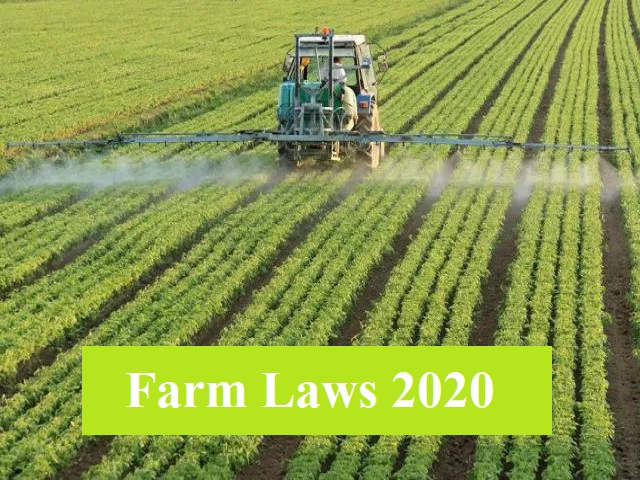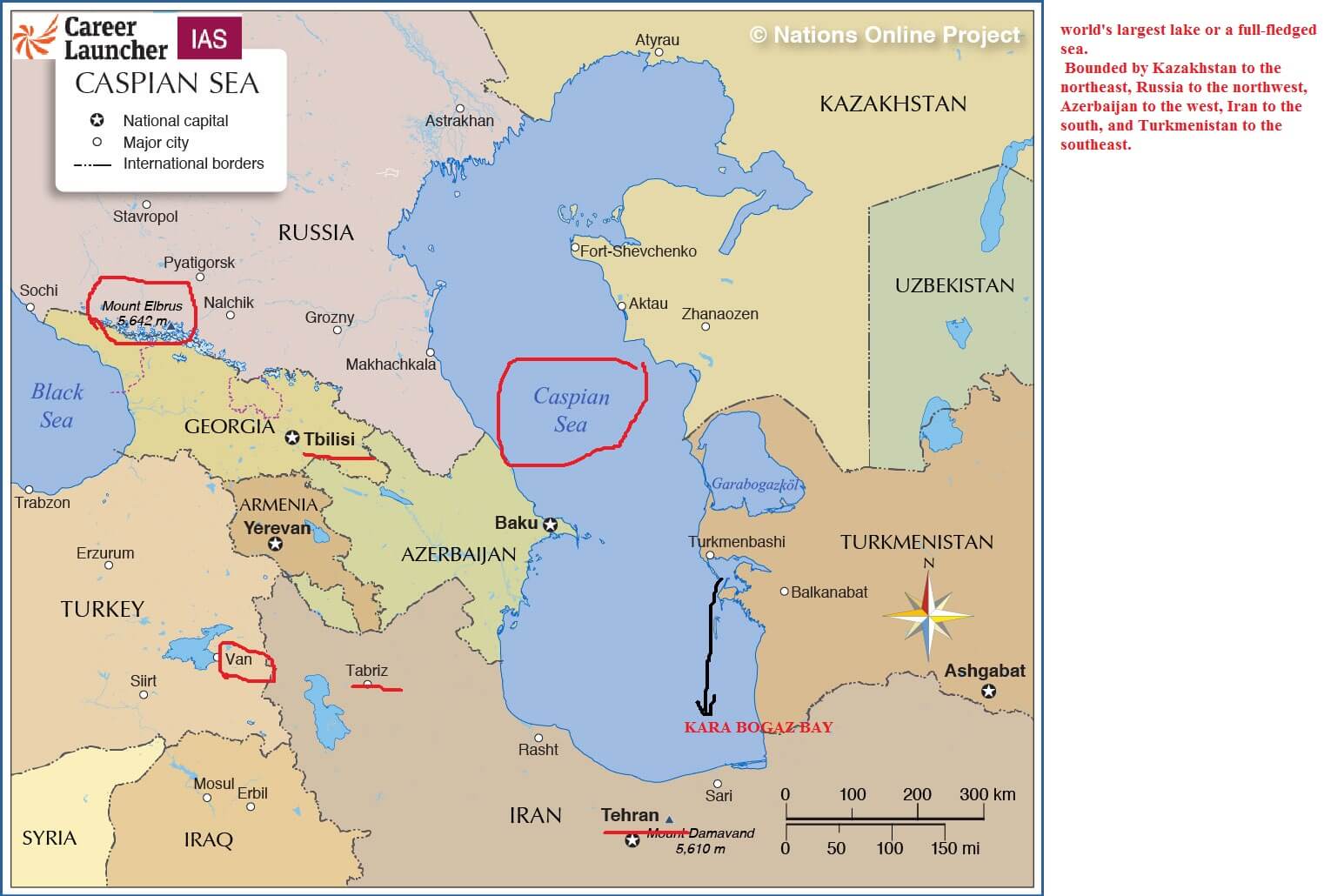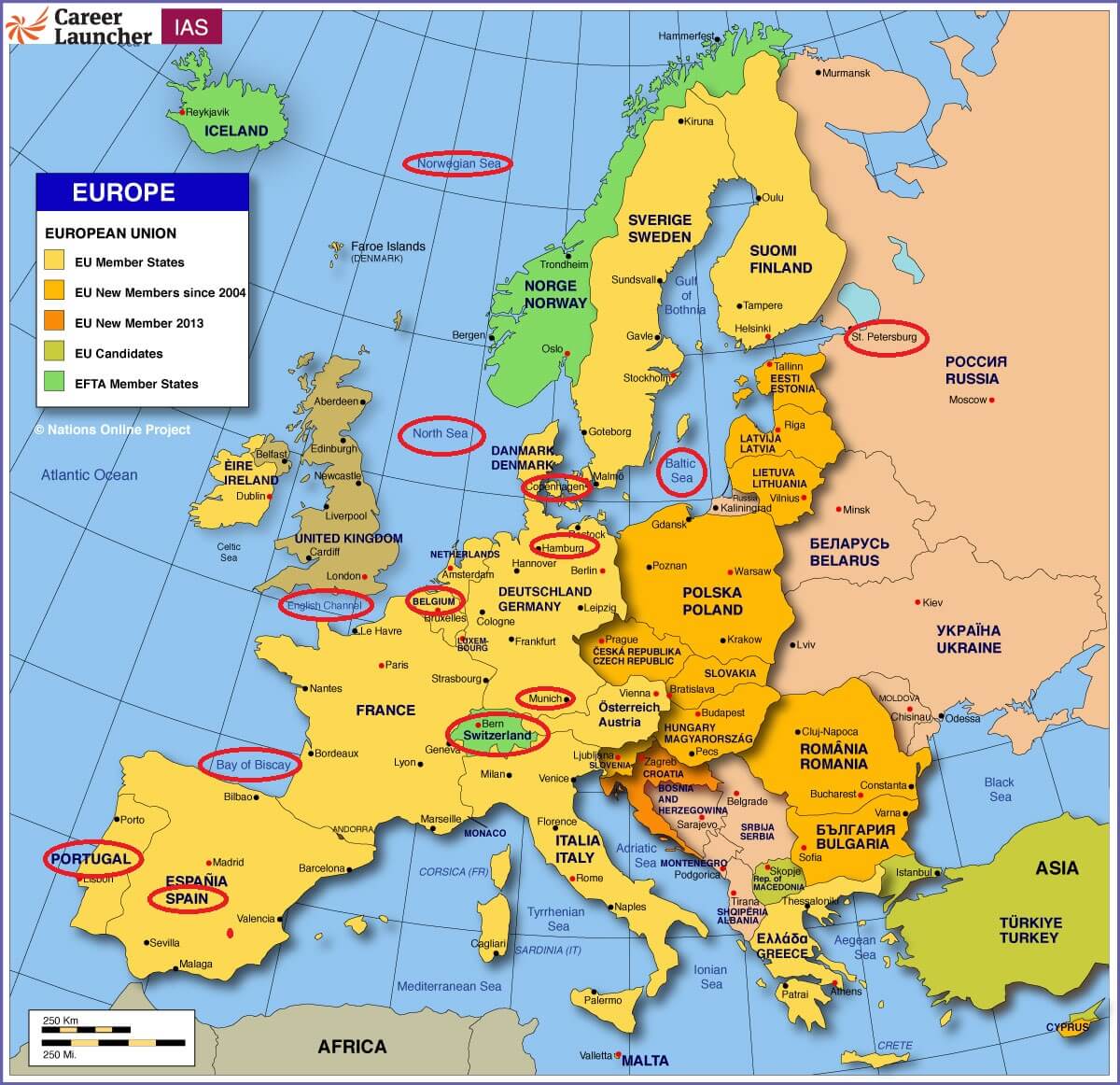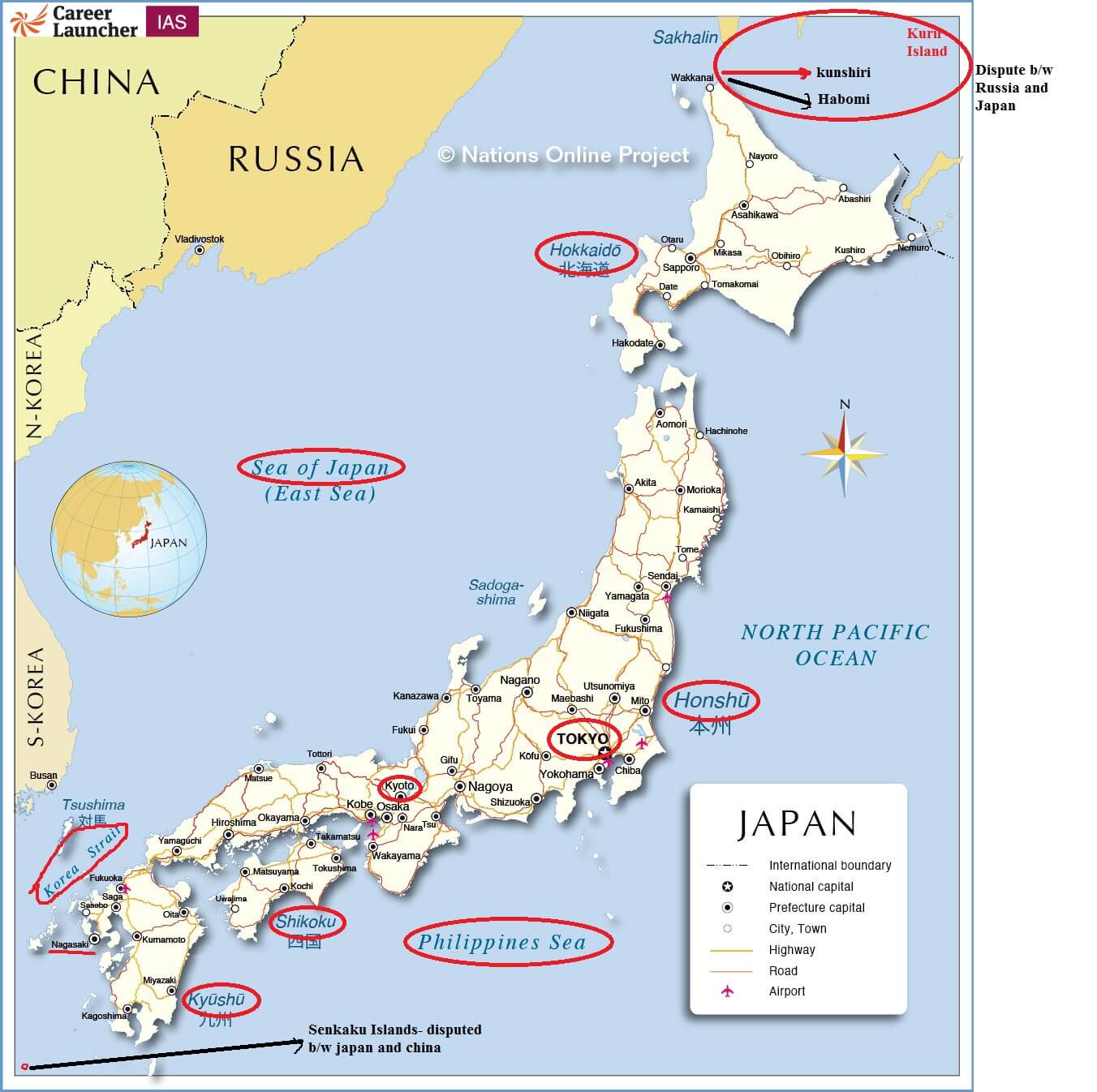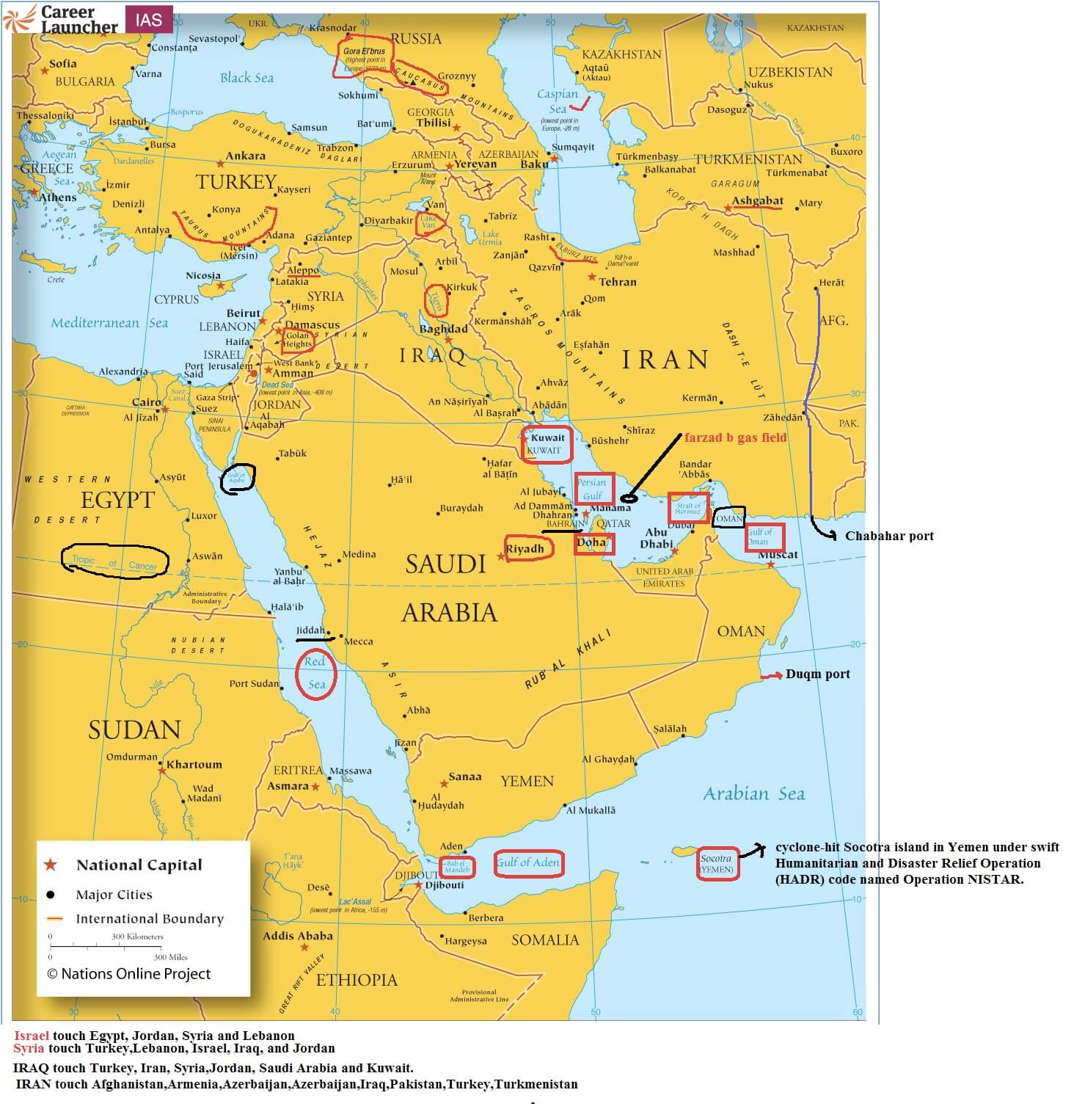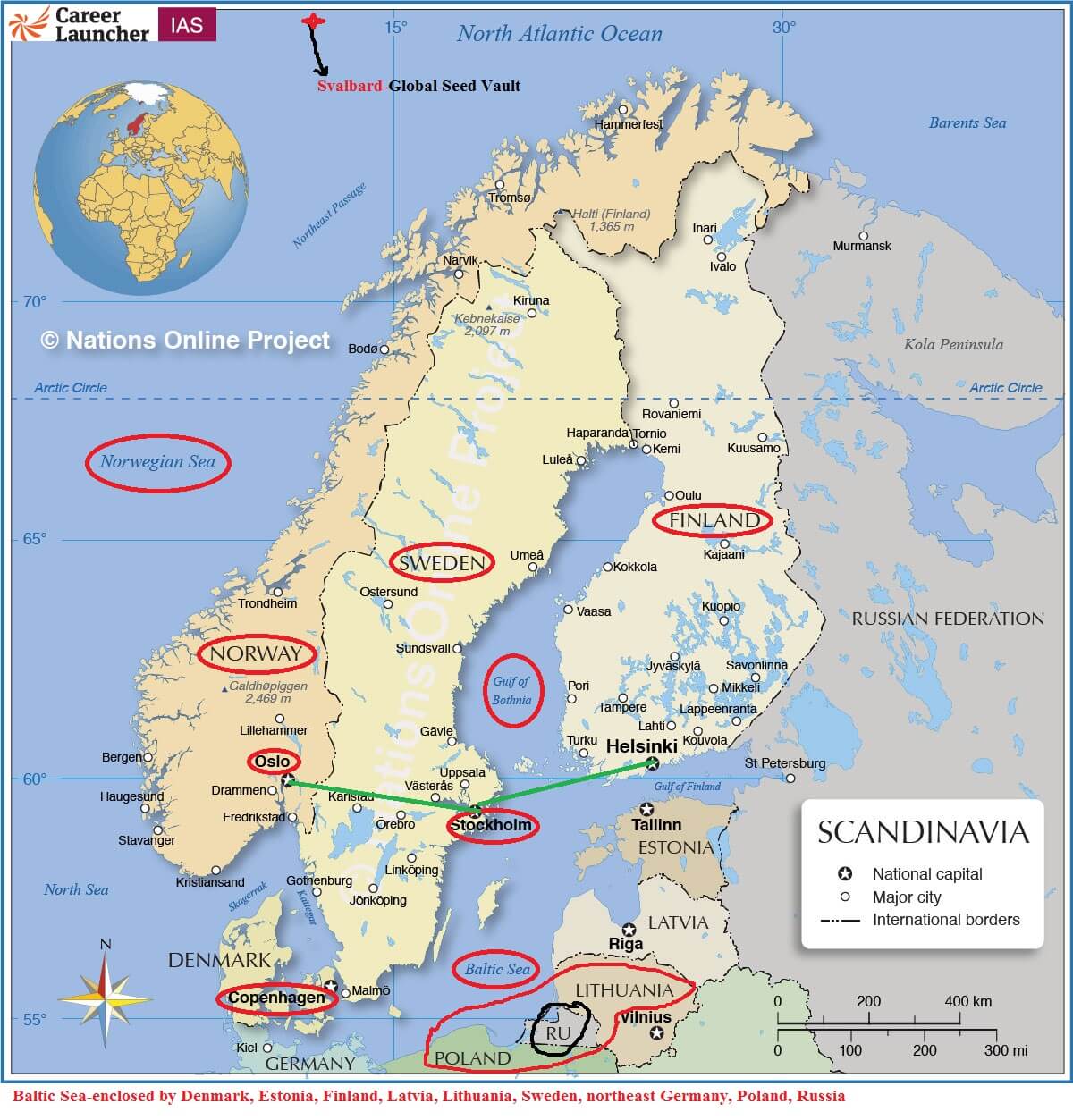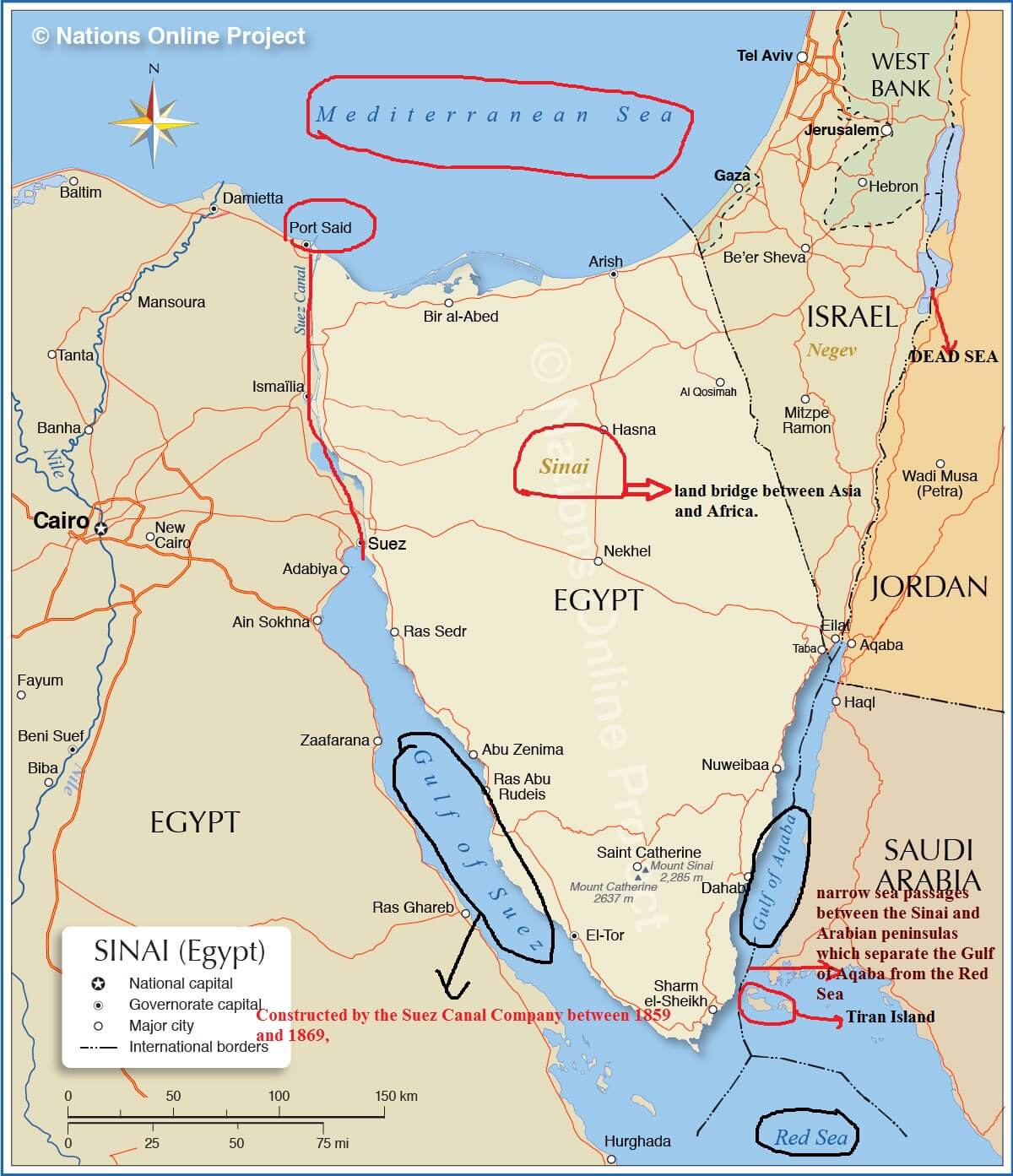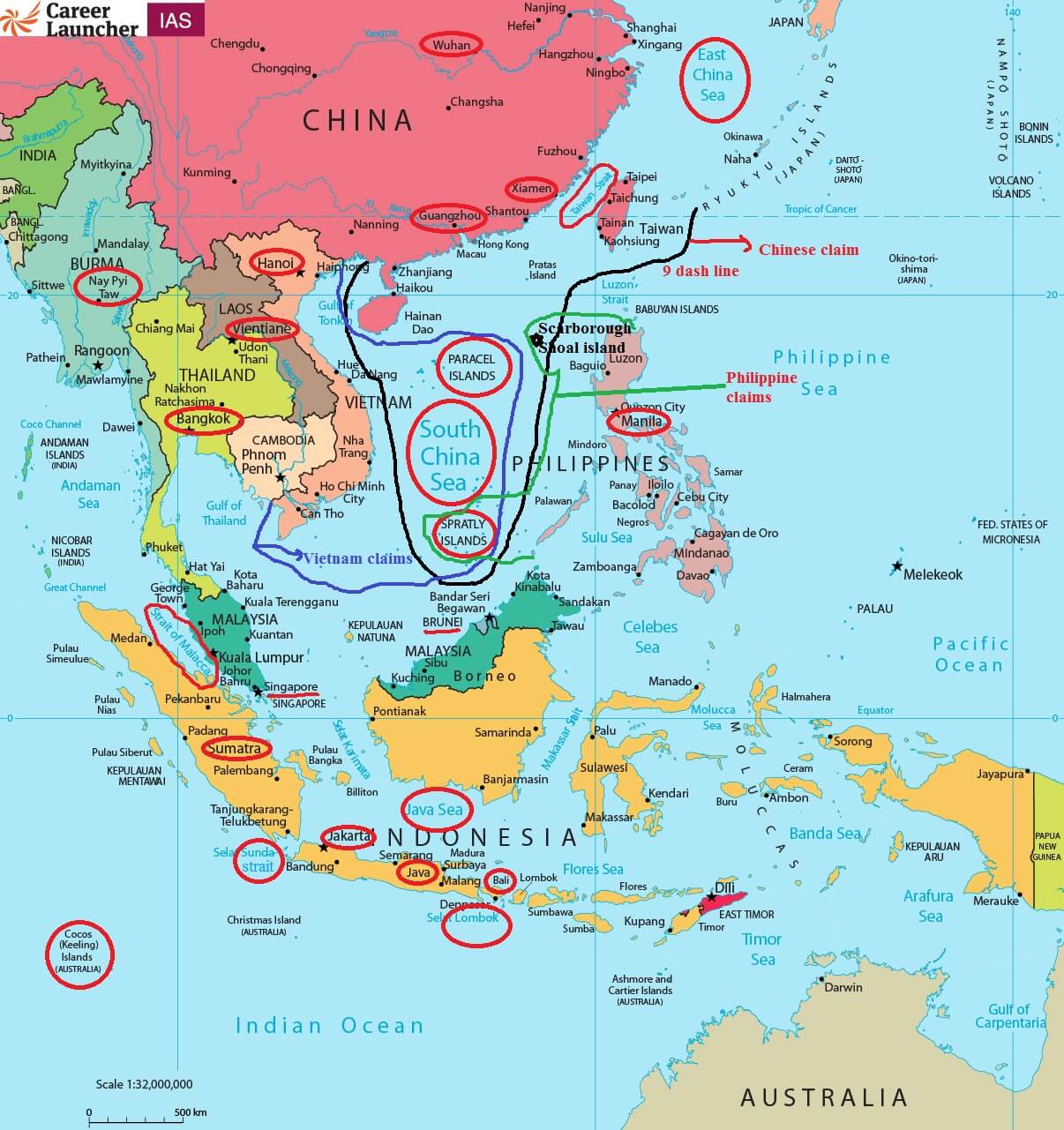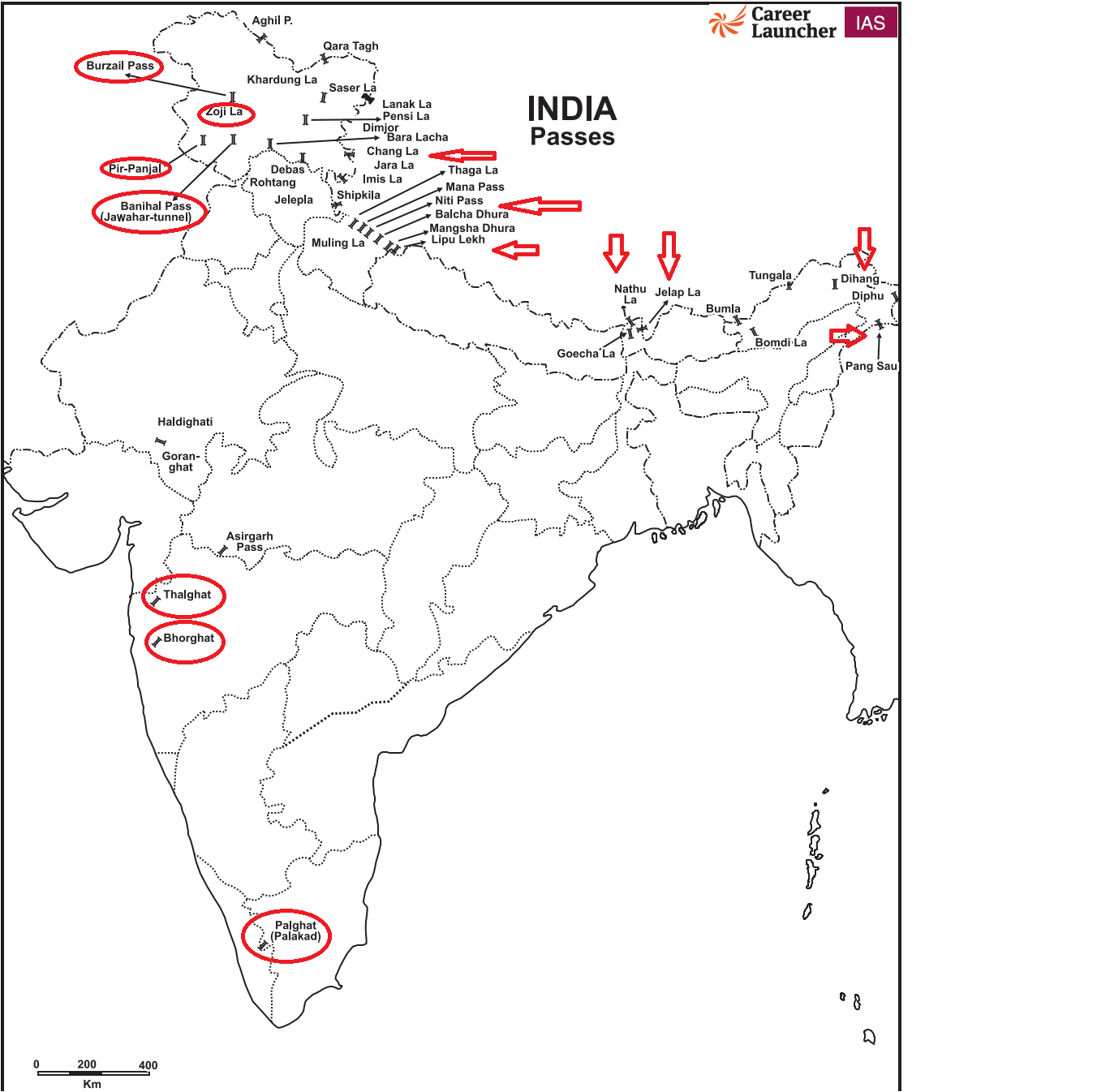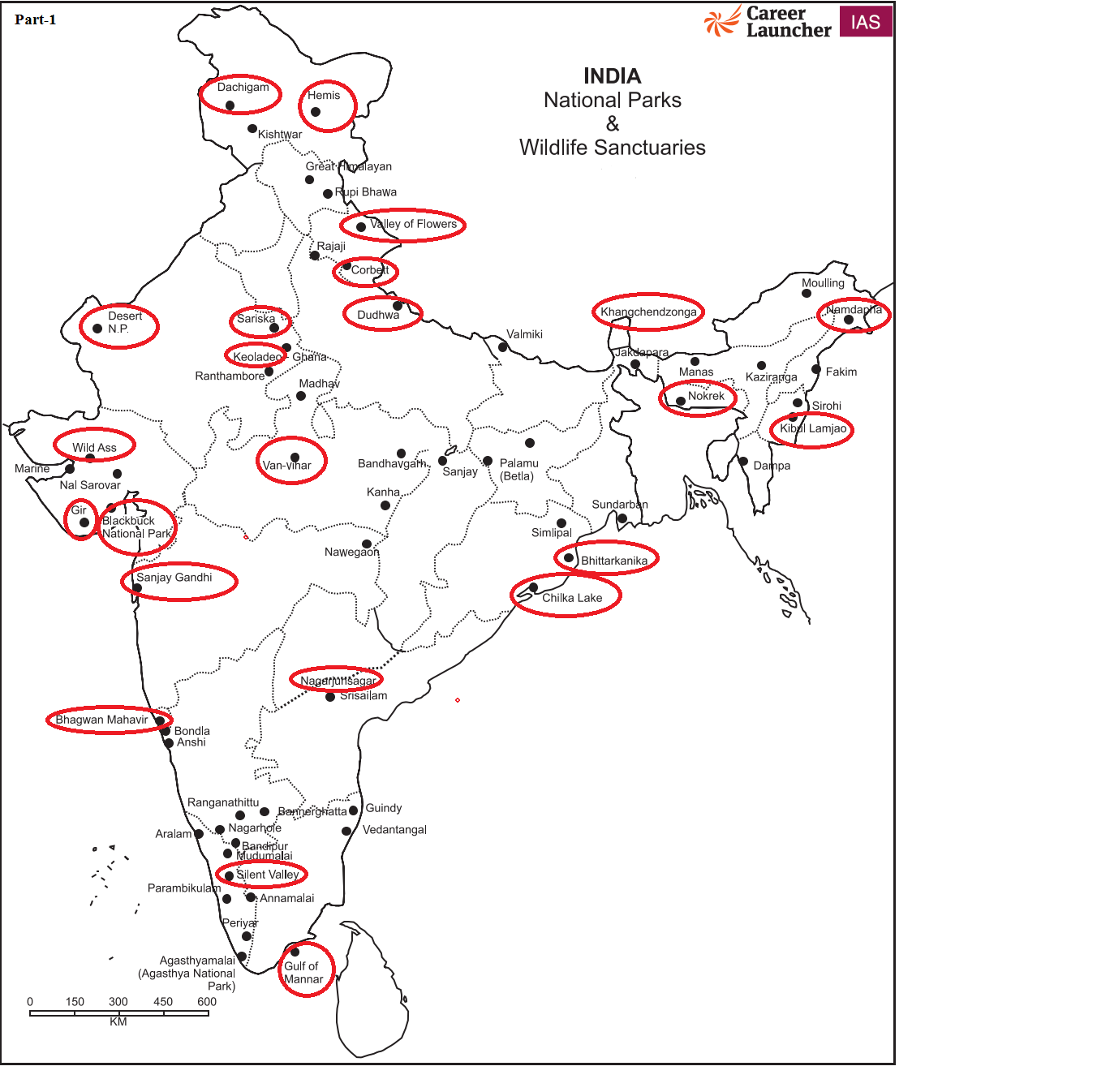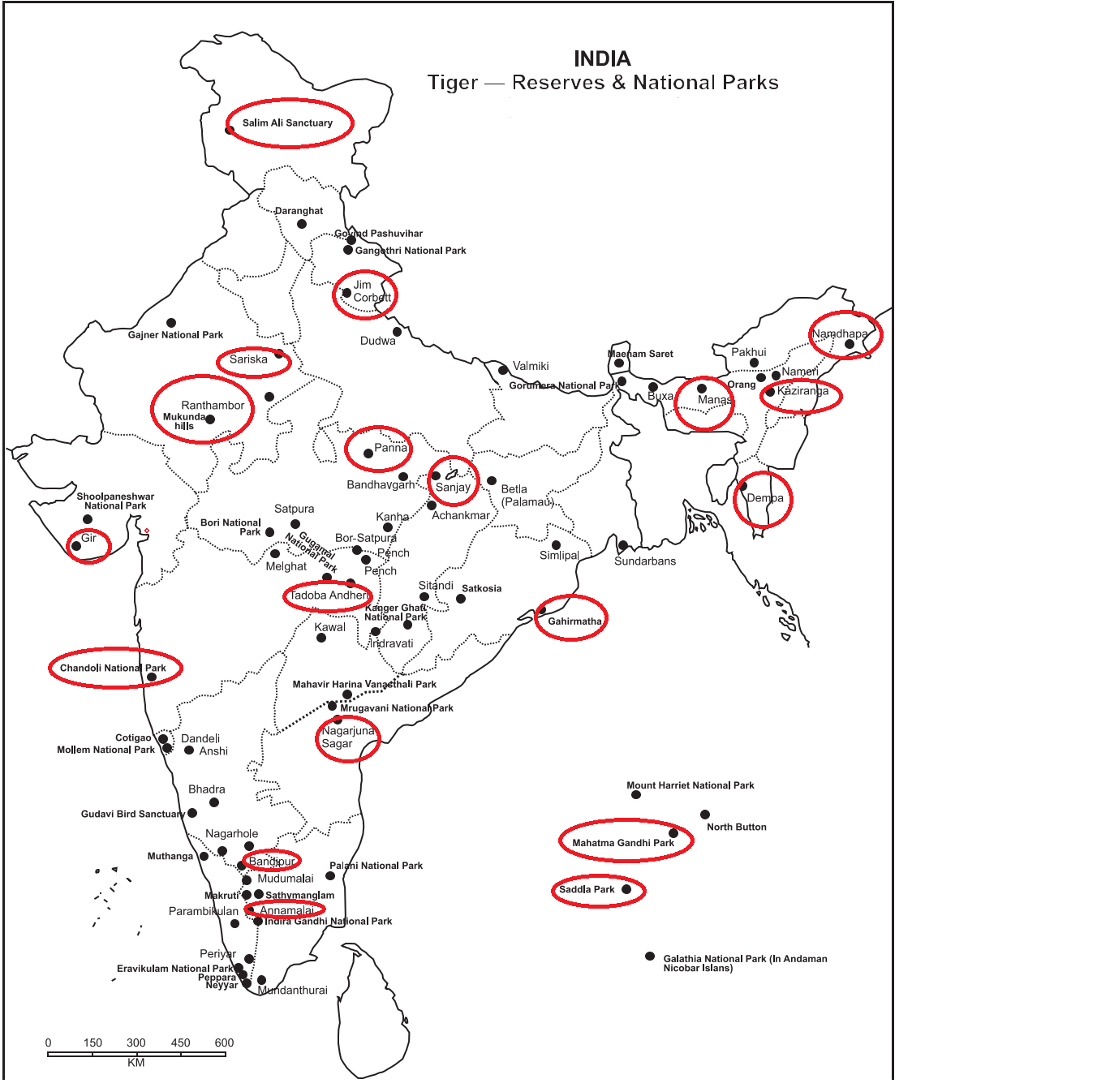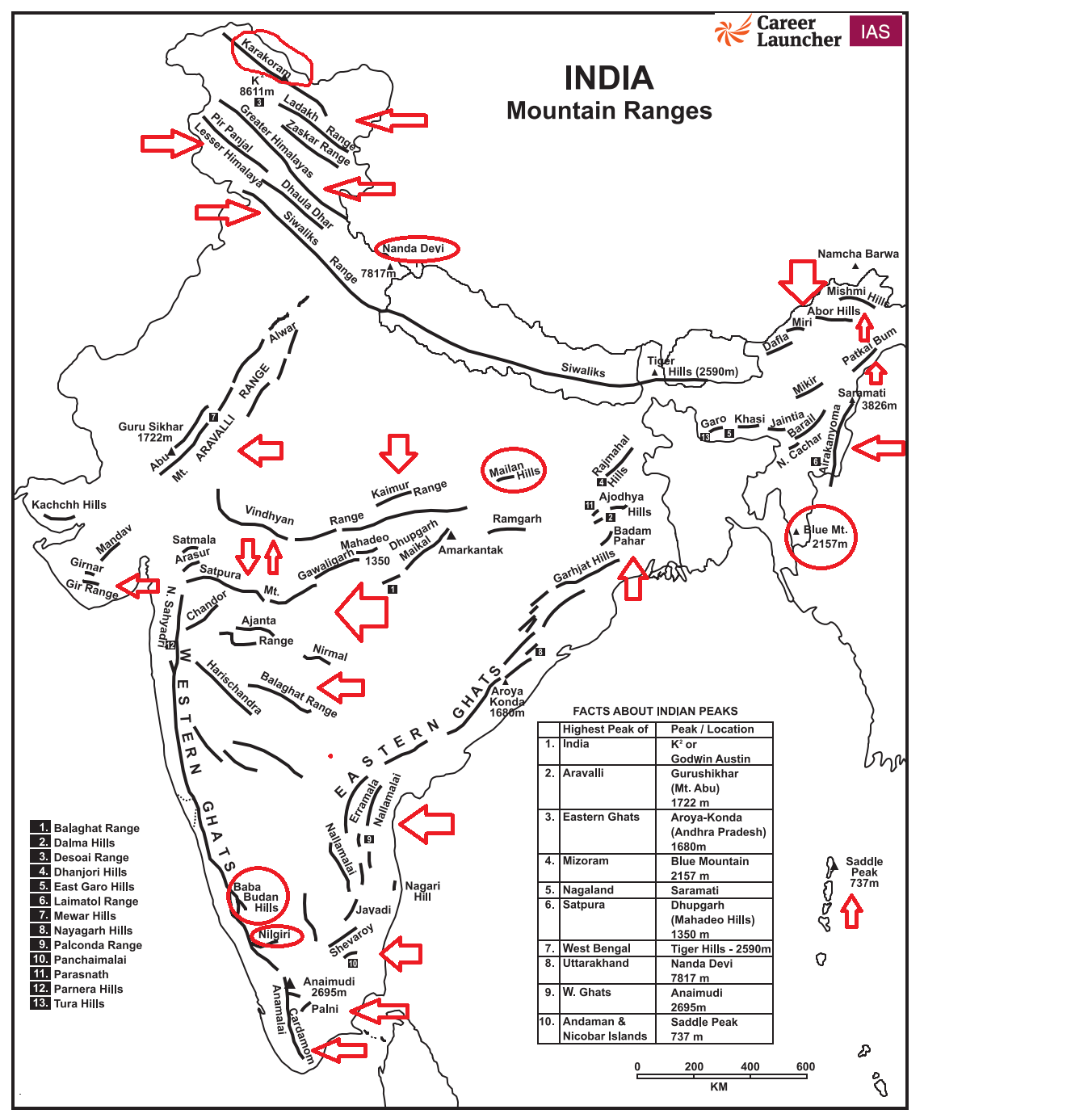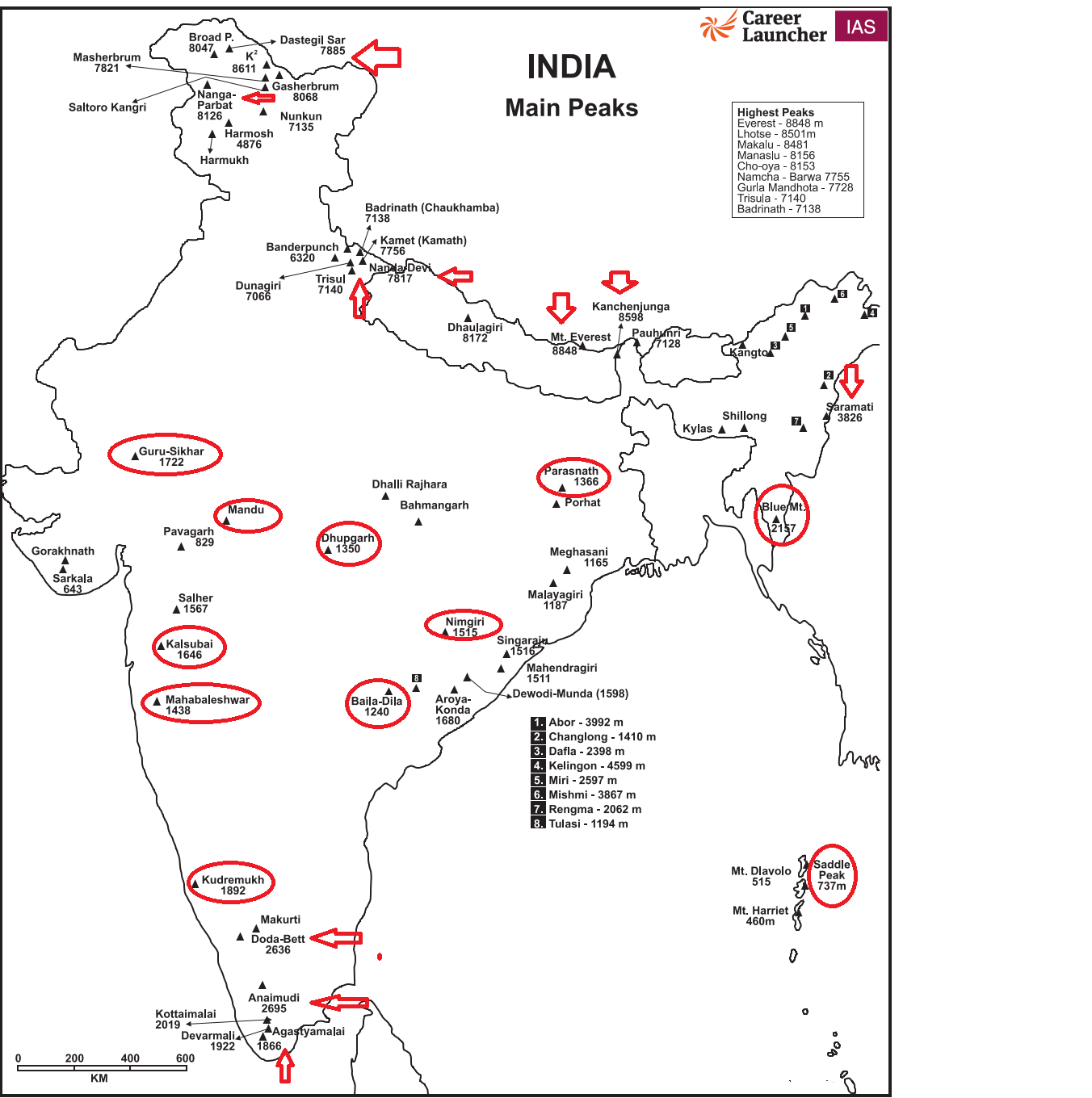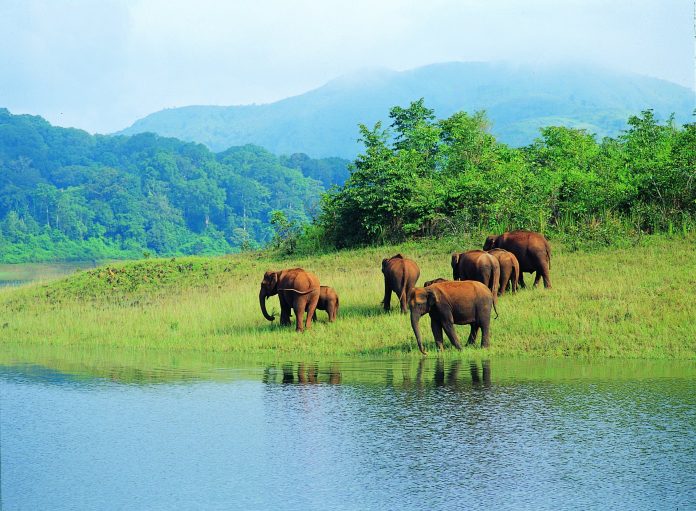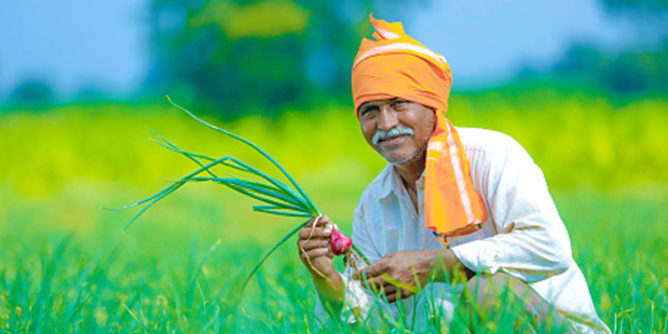AGASTHYA NATIONAL PARK
Located in Thiruvananthapuram (Trivandrum) District of Kerala, it is a dense forest area. Now it is protected to conserve biodiversity. Its lakes and ponds attract birds and mammals. Its surroundings are known for high relative humidity throughout the year. It attracts domestic and international tourists, especially during the winter season.
ANAMALAI NATIONAL Park
Situated in the Coimbatore District of Tamil Nadu, it is a national park and wildlife sanctuary. The main fauna includes tiger, leopard, elephant, civet cat, and lion-tailed macaque. Thousands of domestic and international tourists visit Anamalai every year. However, in the name of eco-tourism, there is environmental degradation in the surroundings of this national park.
ANSHI NATIONAL Park (1987)
Located near the city of Dandeli in the Uttara-Kannada District of Karnataka along the border of Goa, it is a habitat of Bengal tigers, black panthers and elephants. It has moist deciduous forests. The species of flora include true cinnamon, bamboo, bauhinia, eucalyptus, silver oak, teak and Jamba.
ARALAM
It is a wildlife sanctuary in the Kannur district of Kerala, about 45 km from Kannur City. Elephant, Sambar, and Barking Deer may be seen in this national park. Thousands of domestic and international tourists visit this national park.
BALPAKRAM (1988)
Located near Tura the Headquarters of the Garo Hills (Meghalaya), Balpakram is a National Park. The highest peak Balpakram is often referred to as the ‘abode of perpetual winds’ as well as the land of ‘land of spirits’. The main fauna of this National Park includes wild water-buffalo, red panda, elephant, several species of cats, monkeys, baboons and barking deer. It is also famous for pitcher plant and many medicinal herbs. The National Park is full of sprawling vegetation consisting of sub-tropical and deciduous trees.
BANDHAVGARH NATIONAL Park (1968)
Located in the Umaria District of Madhya Pradesh, it sprawls over an area of 105 km’. It has the highest density of Bengal-tigers in India. The park has a large breeding population of leopards and various species of deer. It also has white tigers. The white tiger, Mohan, is now stuffed and on display in the palace of the Maharaja of Rewa. Rising mining activities around the park are putting the tigers at risk. Among other species are sambar, barking-deer, nilgai, gaur etc.
BANDIPUR NATIONAL Park (1974)
Located about 80 km from the city of Mysore in Chamarajanagar District of Karnataka, it was once a private hunting reserve of the Maharaja of Mysore. At present, it is upgraded as Bandipur Tiger Reserve. Bandipur supports a wide range of timber trees including teak, rosewood, sandalwood, Indian laurel, Indian kino tree, giant clumping bamboo and Grewia- tiliaefolia. In addition to these, there are Kadam tree, Indian gooseberry, axelwood, golden shower tree, satinwood, black cutch, etc. The fauna of the National Park includes tigers, leopards, Indian elephant, gaur, chital, sambhar, sloth bear, four-horned antelope, gray-langur, wild-boar and muntjac. The main birds include buzzards, red-headed vultures, Indian vultures, flower-peckers, hoopoes, Indian rollers, brown fish-owl, crested serpent eagle, bee-eaters and kingfisher. The main reptiles are cobra, python, rat-snake, muggers, monitor lizards, Indian chameleon and flying lizards.
BANNERGHATTA NATIONAL Park (1974)
Located near the city of Bangalore (Karnataka), it is a popular tourist destination with a zoo, a pet corner, an animal rescue centre and a butterfly enclosure. The main fauna includes sandalwood, neem, arjun, tamarind, bamboo and Eucalyptus. Elephants, gaur, leopard, jackal, wild boar, sloth bear, sambar, chital, hippopotamus spotted deer, common langur, porcupine, hare, monitor-lizard, cobras, krait and zebra are important.
BETLA NATIONAL Park (1989)
Located in the Latehar District (Jharkhand) of the Chotanagpur Plateau, the Betla National Park has vast areas of vegetation of tropical wet evergreen forests in the lower reaches (moist and dry) deciduous forests in the middle and temperate alpine forests in the upper reaches. The main species include sal, mahua, bamboo and grasses. It is famous for bison, elephants, tigers and leopards. Among other wild animals hyena, panther, sloth bear and wolf are common. Other animals include deer, sambar, four-horned antelope, nilgai, kakar, civet, porcupine and mongoose.
BUAPRA TIGER RESERVE (1974)
Located in the Western Ghats in the state of Goa, it is famous for the tropical evergreen forests and moist deciduous forests. The main fauna of the sanctuary includes Bengal tiger, black panther, leopard, barking deer, macaque, langur, civet, flying squirrel, giant squirrel, gaur, mouse deer, porcupine, slender loris, sambar, spotted deer and wild dog. In addition to these, there are emerald dove, blue-bird, greater Indian hornbill, black woodpecker, grey-headed myna, jungle fowl, yellow bulbul and kingfisher. The Dudhsagar waterfall is a tiered waterfall located on the Mandvi River at the Karnataka border in the southwestern part of the park. Drango, emerald dove, fairy bluebird, hornbill woodpecker, grey-headed myna jungle fowl, and bulbuls are important.
BHAGWAN MAHAVIR SANCTUARY AND MOLLEM NATIONAL Park (1978)
Situated near the town of Molem, it is a sanctuary and National Park in Goa. It has several important temples of the Kadamba Dynasty and Dudhsagar Waterfalls. It is the home of nomadic buffalo herders known as Dhangar tribe. This National Park contains deciduous and moist deciduous forests. The predominant species are Terminalia and Dalbergia. The forest canopy is almost closed and the availability of grass is very limited. Wild mammals include black panther, barking deer, gaur, Malabar giant squirrel, mouse deer, pangolin, porcupine, slender loris, sambar, spotted deer, wild boar and wild dog.
BHITARKANIKA (1975)
Located in the Kendrapara District of Odisha, it is surrounded by the Bhitarkanika Wildlife Sanctuary and the Gahirmatha Beach and Marine Sanctuary. The park is a home of the endangered Saltwater Crocodile, White Crocodile, Indian Python, King Cobra and Black Ibis. The vegetation species include mangroves (Sundari, thespian, grasses and indigo- bush). Every year about 80,000 migratory birds arrive in this park for nesting during monsoon season.
BLACKBUCK NATIONAL Park
Situated in the vicinity of Gulf of Khambat, this national park lies in Bhavnagar District of Gujarat. It was established in 1976. It has blackbuck, wolf, bustard, deers, and nilgai. Thousands of nature lovers visit this national park annually.
BORI NATIONAL Park (1977)
Located in the Hoshingabad District of Madhya Pradesh, Bori Wildlife Sanctuary was established in 1977. It is a part of the Panchmarhi Biosphere Reserve. The Tawa River lies to the west of the sanctuary. The sanctuary is mostly covered by mixed deciduous and bamboo forests. The dominant species include teak dhaora, tendu etc.
BUXA TIGER RESERVE (1983)
Located in the Alipurduar District of West Bengal, to the south of Bhutan, it is National Park and a Tiger Reserve. It has the species of Eastern Bhabhar and Tarai-Sal, Eastern Himalayan Moist Deciduous Forest, Moist Sal, Northern Dry Deciduous, Sub-Himalayan Mixed Deciduous, and Northern Tropical Evergreen Forests. The main trees are sal, champa, gamar, simul and chikrasi. The fauna includes Rhino, Asian elephant, tiger, gaur, wild boar, sambhar.
CHANDOLI NATIONAL Park (2004)
The Chandoli National Park is located in the Sangli District of Maharashtra State. Chandoli National Park is notable as the southern portion of the Sahyadri Tiger Reserve, with Koyna Wildlife Sanctuary forming the northern part of the reserve. The main flora of this National Park includes moist deciduous forest and the dwarf evergreen forests. Its fauna consists of iron-wood, jamun, pisa, fig, olea, katak, kanjal, kokum, phanasi-false, Indian laurel, amla, umber and grasses. The main fauna includes tigers, leopards, gaur, barking deer, mouse-deer, sloth-bears and black-buck.
CORTICAL NATIONAL Park
It is a national park located in the South District of Goa. The main fauna of this peak includes leopard, gaur, sambar, chital, mouse deer, civet, toddy cat, wild boar, monkeys, and langur. Thousands of nature lovers visit this national park annually.
DACHIGAM NATIONAL Park (1981)
Located about 22 km from the city of Srinagar (J & K), it sprawls over an area of about 141 km”. It is located in the Zabarwan Range of the Western Himalayas its altitudinal variation is between 1700 to 4300 meters above the sea level. The mountainsides below tree line are heavily wooded. Most of the coniferous forests consist of broad leaf species. Interspersed between these are alpine pastures and meadows. The main animal species in the Dachigam National park are musk-deer, leopard, Himalayan serow, Himalayan grey-langur, leopard-cat, Himalayan brown bear, jackal, hill-fox, Himalayan weasel, Yellow-throated marten, jungle-cat, otter and long-tailed marmot. The main birds include cinnamon sparrow, black bulbul pygmy owlet, woodpecker, babbler, Himalayan vultures, bearded vultures, wall-creeper and chough.
DAMPHA TIGER RESERVE (1985)
Situated in the western part of Mizoram at the international border of Bangladesh about 127 km from Aizawl. It covers an area of 550 sq km. It is the natural home of leopards, Indian bison, barking deer, sloth bear, gibbons, langurs, slow loris, Indian python, wild boar, and a variety of birds. Tigers’ population is insignificant in this sanctuary.
DARANGHATI NATIONAL Park
It is a national park in the Shimla District of Himachal Pradesh. The main fauna includes leopard, ibex, musk deer, and peacock. Thousands of domestic and international tourists visit this national park annually.
DESERT NATIONAL Park (1992)
Located near the city of Jaisalmer, it is one of the largest National Parks of India. It is a typical example of the ecosystem of Thar Desert. About 20 per cent of its area is covered by sand-dunes. The National Park is a heaven for the migratory birds. Many eagles, harriers, falcons, buzzards, kestrels and vultures can be seen in this National Park. The endangered great Indian bustard is a magnificent bird found in relatively fair numbers. The Indian bustard migrates locally in different seasons. The Desert National Park has a collection of fossils of animals and plants of 180 million years old. Some fossils of dinosaurs of about 6 million years old have been found in the area.
DUDHWA NATIONAL Park (1977)
This National Park is located in the Kheri-Lakhimpur District of Uttar Pradesh. The main species of vegetation include moist deciduous, tropical seasonal swamp forests and tropical dry deciduous forests. The main flora includes sal, asna, shisham, jamun, gular, sehore bahera and numerous grasses. The major attractions of the Dudhwa National Park are the tigers and swamp deer. In 1980, Indian rhinoceros was introduced into Dudhwa from Assam and Nepal.
ERAVIKULAM NATIONAL Park
This is a national park in the Idukki District of Kerala. It lies near the Anamudi Shola National Park. The main fauna of this national park includes tiger, leopard, elephant, civet, sambar, barking deer, and numerous birds. This is under consideration by the UNESCO World Heritage Committee for selection as a world heritage site.
FOSSIL NATIONAL Park (MANDLA-M.P.)
Located in the Mandla District of Madhya Pradesh, it has the fossils of plants that existed in India between 40 million and 150 million years back. These fossils are spread over seven villages (Barbaspur, Chanti-Hills, Chargaon, Deorakhurd, Deori- Kohani, Ghuguwa, and Umaria). The National Park is spread over agricultural fields in the seven above given villages. The fossils look like ordinary rocks and are either removed from the field unwittingly by the farmers or are damaged by the tourists and other unscrupulous people.
GAHIRMATHA Wildlife Sanctuary
in Odisha, known for the protection of sea turtles. It is the world’s most important nesting beach for Olive Ridley Sea Turtles.
GAJNER NATIONAL Park
It is a national park in the district of Bikaner of Rajasthan. The main fauna of this national park consists of blackbuck, antelope, and chinkara. Thousands of domestic and international tourists visit this park, especially during the winter season.
GALATHEA NATIONAL Park
This national park is located in the union territory of Andaman and Nicobar Islands. The total area of this national park is 110 sq km. It forms a part of the Great Nicobar Biosphere Reserve. Many unique and rare species of plants and animals are found in this park, a number of which are endemic to the island
GANGOTRI NATIONAL Park
This national park is located in the Uttarkashi District of Uttarakhand. It stretches over an area of 1153 sq km. This park provides majestic beauty of coniferous forests and grandeur of the glacial world, combined with lush green meadows. It is one of the fourteen biosphere reserves of India. Thousands of nature lovers and educationists visit the Gangotri National Park for education, research, and enjoyment, especially during the summer season.
Gir NATIONAL Park (1965)
This National park and Wildlife Sanctuary is located in the state of Gujarat. It is the sole home of Asiatic lions. It is traversed by the seven major perennial rivers of Gir region. These rivers are Hiran, Shetrunji, Datardi, Shingoda, Machhundri, Godavari and Raval. The Kamleshwar Dam is a located in the Gir National Park. Teak occurs mixed with dry deciduous species. The savannahs of this National Park are known as ‘vidis’. It is the largest deciduous forest in Western India. The main fauna includes Asiatic lion, Indian leopard, Indian cobras, jungle cat, striped hyena, golden jackal, Indian mongoose, India palm-civet, and ratles. Moreover, there are chital, nilgai, sambar, four-horned antelopes, chinkara, blackbuck, wild-boa and python.
GORUMARA NATIONAL Park
This is a national park in the northern part of West Bengal. Located in the Terai region of the Himalayan foothills, it is a medium-sized park with grasslands and forests. It is primarily known for its population of Indian Rhinoceros. Among other animals, elephants, bear, leopard, wolf, deer, monkeys, langurs, and numerous birds are important.
GOVIND PASHU VIHAR
This is a wildlife sanctuary located in Uttar Kashi, Uttarakhand. The park was established on March 1, 1955, and covers about 957 sq km of area. The Indian Government initiated the Snow Leopard Project in Govind Pashu Vihar. Other fauna of this sanctuary includes the black bear, the brown bear, common leopard, serow, golden eagle, bearded vulture, snow cock, steppe eagle, and the black eagle.
GREAT HIMALAYAN NATIONAL Park
This national park is located in the Kullu District of Himachal Pradesh. The Great Himalayan National Park is a habitat of more than 375 fauna species that include 31 mammals, 181 birds, 3 reptiles, and 9 amphibians. The main fauna of this national park includes serow, musk-deer, bharal, leopard, wolf, and flying squirrel. It also supports a great variety of plant life which is scattered over the park. The park is visited by thousands of domestic and international tourists annually.
GUGAMAL NATIONAL Park
Located in the Amravati District of Maharashtra, this national park was built in 1974. It protects a large number of fauna and flora, especially leopard, wolf, fox, wild cats, antelopes, deers, nilgai, and numerous birds and flora.
GUNDIY National Park
has a dry evergreen scrub and thorn forest, grasslands, shrubs, climbers and herbs. Its vegetation also consists of sugar-apple, wood-apple and Neem trees. There are 14 species of mammals including blackbuck, chital, or spotted deer, jackal, small Indian civet, palm civet, macaque, hyena, hedgehog, common mongoose and striped palm squirrel. Guindy Snake Park is famous for king cobra, python, vipers and other reptiles.
HEMIS NATIONAL Park (1981)
Located in the Leh District of the Jammu and Kashmir State, it is a high altitude and the largest National Park of India. It is world-famous for the highest density of snow-leopards. The Rumbak stream flows through the National Park. It also has a small population of Asiatic Ibex, Bharal (Blue Sheep) and Argali (Tibetan-sheep). The endangered Tibetan wolf and the Eurasian brown bear are also found in the National Park. The Rumbak Valley offers good opportunities for bird-watching. The main vegetation includes juniper, sub-alpine dry birch and fir
INDIAN WILD ASS Sanctuary (1972)
The Indian Wild Ass Sanctuary is located in the Little Rann of Kachchh in Gujarat. In Gujarati, Rann stands for desert. The Rann gets flooded for a period of about one month during monsoon and is spotted with about 74 elevated islands (plateaus) locally called ‘bets’. These bets are covered with grasses and feed the population of animals. It has the world’s last population of Khur sub-species of the wild ass.
INDIRA GANDHI NATIONAL Park AND WILDLIFE SANCTUARY (1974)
Located in the Anaimalai Hills (Coimbatore District) of Tamil Nadu it is a wildlife sanctuary and National Park. It has the unique Karian Shola vegetation, hills grasses. The National Park and Sanctuary are under consideration by the UNESCO as part of the Western Ghats World Heritage site. It is often called ‘Topslip’ a name derived from the local 19th-century practice of sliding teak-logs down from the hills in the Anaimalai Hills. The wild animals of the sanctuary include the threatened species of Bengal Tiger, Indian elephant, dhole, and lion-tailed macaque. In addition to these, there are jackals, leopards, spotted deer, barking deer, mouse deer, wild boar, common langur, Asian Palm civet, sambar, giant squirrel, Indian porcupine and stripped squirrel.
INDRAVATI NATIONAL Park (1982)
Located along the bank of Indravati River in the Bijaipur District of Chhattisgarh, it is home to one of the last populations of rare wild buffalo. It derives its name from the Indravati River which flows from west to east. The flora in the Indravati National Park consists mainly of tropical moist deciduous type with predominance of sal, teak, bamboo, mahua, tendu, semal, haldu, jamun, ber, salai, and trees. There are also rich patches of excellent grasslands providing much-required fodder to buffalos, chital, barking deer, nilgai, gaur (Indian bison) and other herbivores of the park. It is one of the last habitats for the endangered wild buffalo. Moreover, there are nilgai, blackbuck, chausingha (four-horned antelope), sambar, chital, wild boar, tigers, leopards, sloth bear, dhole (wild dog) and striped hyena. Freshwater crocodiles, lizards, Indian chameleon, common krait, Indian rock-python, cobra are also found. The park also gives shelter to a large variety of birds of which Hill -myna is the most important.
KALAKAD MUNDANTHURAI TIGER RESERVE
Located in the southern-western Ghats in Tirunelveli and Kanniyakumari districts of Tamil Nadu, the Kalakad Mundanthurai Tiger Reserve was established in 1988. It has 150 endemic plants, 33 fish, 37 amphibians, 81 reptiles and 273 birds. It has tigers, leopards, wild-cat, Nilgiri-tahr, wild pig, mouse deer sloth bear, lion-tailed macaque, langur slender loris, giant squirrel and crocodiles.
KANGER GHATI (VALLEY) NATIONAL Park (1982)
Located in the Jagdalpur district of Chhattisgarh, it is also called as the Kanger Valley National Park. The flora of the park consists of a mixed moist deciduous type of forest with a predominance of sal, teak and bamboo trees. In addition to these, the National Park is also known for medicinal plants, grasses, climbers, wild sugarcane, canes, ferns and epiphytes. The main fauna of the Kanger Valley National Park include tigers, leopards, mouse-deer, wild-cat, chital, sambar, barking deer, jackals, langurs, sloth bear, flying squirrel, wild boar, striped hyena, rabbits, pythons, cobra and crocodiles.
KANHA NATIONAL Park AND TIGER RESERVE (1955)
it is the largest National Park of Madhya Pradesh. The park has a significant population of Royal Bengal Tiger, leopards, sloth bear, swamp deer, Indian-gaur, barasingha and Indian wild dog. Kanha National park is rich in sal, and other mixed forest trees interspersed with meadows. The highland forests are tropical moist dry deciduous type. It has many open grasslands. Moreover, there are climbers, shrubs and numerous flowering plants.
KAZIRANGA NATIONAL Park (1905)
located in the Golaghat and Nagaon districts of Assam; the Kaziranga National Park is a World Heritage Site. There are more than two-thirds of the world’s great one-horned rhinocerous. According to the census of 2015, the current population of rhinocerous in Kaziranga is 2401 as published by the Forest Department, Govt. of India. Moreover, it has the highest density of tigers among protected areas in the world. It is the home to large breeding populations of elephants, wild water buffalo and swamp deer. Kaziranga National Park has a vast expanse of tall elephant grass, marshland and dense moist deciduous forests.
KEBUL LAMJO NATIONAL Park (1977)
Located in the Bishanpur District of Manipur, this National Park was created in 1977. It is an integral part of Loktak Lake and the only floating park in the world. The park is characterized by many floating decomposed plant materials locally called Phumdis. The park, primarily composed of moist semi-evergreen forests, has a rich amalgam of aquatic and terrestrial ecosystems. The grassland structure of the park is aquatic flora recorded in the park which includes wild rice, reeds and grasses. The main fauna includes brown-antlered deer which is the flagship species of the park. In addition to this, hog-deer, wild boar, large Indian civet, common otter, fox, golden cat, and sambar are important. The main birds include kingfisher, black kite, lesser sky-lark, northern hill myna, crow, cranes and woodpecker.
KEOLADEO NATIONAL Park
This is a national park in the Bharatpur District of Rajasthan, famous for its indigenous and migratory birds. It was declared a protected sanctuary in 1971. It is also declared a World Heritage Site. The sanctuary hosts a small wintering population of the rare Siberian Cranes, cormorant, and stroke. Other species found in this national park include mallards, teals, gulls, coots, garganey, tufted ducks, common pochard, cormorant, stork, spoonbill, quil, heron, teal, and tern. Sambar, chital, blackbuck, wild boar, and civet cat are among the animals found in this national park.
JIM CORBETT NATIONAL Park (1936)
Located in the Nainital District of Uttarakhand, it is the oldest National Park of India. The Ramnagar River passes through the Jim Corbett National Park. Its flora consists of dense moist deciduous forest mainly sal, haldu, peepal, rohini, and mango trees. Among the fauna, Bengal Tiger, leopard, elephants, small cats, black bears, mongoose, sambar, hog-deer, langur, macaques, chital and owls are important.
MAHATMA GANDHI MARINE Park
This national park of India is located in Wandoor on the Andaman Islands. Situated about 29 km from Port Blair, it has coral reefs and associated coral fish, sea turtles, water monitor lizards, wild boar, and sea snakes. The tourists are interested in eco-tourism visit this national park in large number.
MAHAVIR HARINA VANASTHALI NATIONAL Park
This national park is located in Vanasthalipuram (Hyderabad), Telangana. The place where the park is located was a private hunting ground of the former rulers of Hyderabad, the Nizam. A deer park was set up in order to preserve this precious heritage and rehabilitate it. The main fauna in this park are blackbucks, porcupines, water monitors, short-toed eagles, kingfisher, and several other birds.
Manas National Park (1990)
Located in the foothills of the Himalayas, it is a national park is a UNESCO Natural World Heritage site, a Project Tiger Reserve, an Elephant Reserve and a biosphere reserve in Assam. This National Park is known for its rare and endangered endemic wildlife such as Assam roofed turtle, hispid hare, golden langur, wild water buffalo, Indian tigers, rhinoceros, gaurs, clouded leopards, golden cat, macaques, gibbons, otters, barking deer, panthers sambar and Pygmy Hog. The main vegetation types include Sub-Himalayan semi-evergreen forests, moist deciduous and dry deciduous forests. It also has low alluvial savanna woodlands and numerous types of grasses.
MARINE NATIONAL Park
This national park lies in the Jamnagar District of Gujarat. In 1982, this park was declared the first marine park of the country, which covers about 460 sq. km. The protected areas of this park include one archipelago made up of 42 islands on the Gulf of Kachchh. The fauna found here include coral, dugong, the finless porpoise, different types of sponges, green sea turtle, ridley turtle, leatherback turtle, and olive turtle. A large number of domestic and international tourists visit this national park annually.
MUKURTHI NATIONAL Park
It lies to the west of Ootacamund in the Nilgiri District of state of Tamil Nadu. The park is a part of the Nilgiri Biosphere Reserve. The park is characterised by Montane grasslands and shrub plants. It is home of an array of endangered wildlife including Royal Bengal Tiger and Asian Elephant. The park was previously known as the Nilgiri National Park.
NAGARHOLE NATIONAL Park (1999)
Located in the Brahmagiri Hills of Karnataka, it is located to the north-west of Bandipur National Park. The main flora includes teak and rosewood, sandalwood, silver oak and golden shower trees. The fauna of this National Park includes tiger, leopard, wild dog (Dhole), gaur, wild boar, elephant and langurs.
NAMDAPHA NATIONAL Park
This national park is located on the banks of the Brahmaputra River in the Chanland District of Arunachal Pradesh. It is close to the border between India and Myanmar. This National park is also known as a botanists dream. There are a tiger reserve and bird sanctuary in the park. Tiger, leopard, white-winged woods duck and gibbon are the important fauna of this park.
NAMERI NATIONAL Park
This is a national park located in the foothills of the Eastern Himalayas in the Sonitpur District of Assam. It is the habitat of leopard, bisons, sambars, wild dog, deer, wild boar, sloth bear, black bear, capped langur, and giant squirrel. There are more than 300 species of birds in this national park.
NEORA VALLEY NATIONAL Park (1986)
This National Park is located in the Kalimpong Subdivision under the District of Darjeeling. The Neora River is the major river of the National park. It is the land of the elegant panda. It has virgin natural forests, dense bamboo groves, rhododendron trees, lush green valleys. The park reaches up to an elevation of over 3500 meters above the sea level. It is characterized by tropical subtropical, temperate and alpine vegetation. The forest s consists of rhododendron, bamboo, oak, ferns, sal, etc. ‘The valley also has numerous species of orchids.
ORANG NATIONAL Park
This national park is located along the north bank of the Brahmaputra River near Tezpur District of Assam. It covers 72 sq km of area. The main fauna of this national park comprises rhinoceros, sambar deer, and barking deer. A number of water birds are also found in this national park.
PAKKE TIGER RESERVE (1966)
Located in the East Kameng District of Arunachal Pradesh, the Pakhui Tiger Reserve sprawls over 862 sq km. The elevation of the reserve varies from 100 m to 2000 meters above the sea level. The sanctuary slopes southwards towards the river valley of the Brahmaputra River. The habitat types are lowland semi-evergreen, evergreen forests and broad-leaf deciduous forest. It is characterized by tigers, leopards, clouded leopards, wild dog, and jackal. In addition to these, there are elephants, barking deer, gaur, sambar, bison, monkey and capped langurs.
PALAMAU TIGER RESERVE (1974)
The Palamau protected area was designated as the Tiger Reserve in 1974. The North Koel River runs through the reserve. The initial count in 1974 when the tiger reserve was created was only 50 tigers. In 1989, there were 65 elephants in the reserve. Apart from tigers and elephants, leopard, gaur, sambar and wild dogs are also found in the reserve. Increased pressures from human activities including illegal settlements and poaching have reduced the number of tigers.
PANNA NATIONAL Park
This national park is located in the Panna and Chhatarpur districts of Madhya Pradesh. It has an area of 540 sq miles. The main animals of this national park are chital, chinkara, sambar, and sloth bear. It is also a tiger reserve. This park has a vast variety of birds also.
PENCH NATIONAL PARK AND TIGER RESERVE (1977)
This is situated in Seoni and Chhindwara Districts of Madhya Pradesh. It derives its name from the Pench River that flows through the national park from north to south dividing the park into almost two equal parts. It was declared as a sanctuary in 1977 but raised to the status of the national park in 1983. Later in 1992, it was declared as a Tiger Reserve. The main trees in the park include teak, sal, mahua, shisham, saja, bija, lendia, haldu, dhaora, salai, aonla (Embica officinalis), amaltas, etc. The main fauna of this park includes tiger, leopard, chital, sambhar, nilgai, wild boar, jackal, sloth bear, wild dog, jungle cat, fox, striped hyena, gaur, barking deer, and chausingha. ‘There are more than 170 species of birds here.
PHAWNGPUI BLUE MOUNTAIN NATIONAL Park
This national park is located in the Blue Mountains in southeast Mizoram close to the Myanmar border. The clouded leopard makes its home here. There are numerous species of bamboo and pine trees in this national park. The park has great attraction for the local people.
PIN VALLEY NATIONAL Park
This is a national park in the Lahul and Spiti districts in Himachal Pradesh. The main fauna of this park are snow leopard, bharal or blue-sheep, snow wolf, snow rabbit, Himalayan fox, and ibex. Birds of this park include the Himalayan snow cock, chakor, patridge, hill pigeon, yellow and red-billed chough, teal, and pintail.
RANGANATHITTU NATIONAL Park
This national park lies in the Mandya District of Karnataka. It is mainly a bird sanctuary with spoonbill and water fowls. It is visited by thousands of eco- tourists and visitors annually. A tourist complex has been developed here to accommodate the nature lovers.
RANTHAMBORE (1980)
Situated in the Sawai-Madhopur District of south-eastern Rajasthan, Ranthambore is one of the largest National Parks in northern India. The park is bounded by the Banas River in the north and by the Chambal River in the south. The Sawai Madhopur National park is known for its tigers. Tigers can be easily spotted even in the day time. Other major animals include leopard, nilgai, sambar, sloth bear, wild- boar, grey langur, macaque and chital. The park has deciduous forests. The park has more than 500 flowering species.
SADDLE PEAK NATIONAL Park
This national park lies in the Andaman District of the Andaman and Nicobar Islands. It has thick evergreen equatorial forests of mahogany, rosewood, ebony, rubber, and cinchona. The main fauna of this national park includes a wild pig, water monitor lizards, saltwater crocodiles, Andaman hill hyena, and the imperial pigeons. It is visited by a large number of tourists annually.
SALIM ALI NATIONAL Park
Located in the valley of Kashmir, formerly it was known as the City Forest National Park. Srinagar Airport is only 12 km away from the park. The name of the park commemorates the Indian ornithologist, Dr. Salim Ali. It is visited by a large number of nature and bird lovers during the summer season.
SALIM ALI SANCTUARY
This is a bird sanctuary in the North Goa district of Goa. The name of the sanctuary commemorates the Indian ornithologist, Dr. Salim Ali. It is visited by a large number of scientists, educationists, ecologists, and bird-lovers throughout the year.
SANJAY NATIONAL Park (1981)
Located in the Singrauli and Sidhi districts of Madhya Pradesh, it is a national park and tiger reserve. The main flora consists of deciduous especially sal and teak. The main animals consists of tiger, leopard, nilgai, spotted deer, chinkara, civet, lizards and more than 300 birds
SARISKA TIGER RESERVE(1955)
Located in the District of Alwar in the Aravallis of Rajasthan State, it is known for the Bengal Tigers. It is the tiger reserve in the world to have successfully relocated tigers. The other wild animals include leopard, jungle cat, striped hyena, golden jackal, chital, sambhar, nilgai, chinkara, four-horned antilope, wild boar, hare, langur and monkeys. The dominant tree in the forest are dhak, salar, kadaya, gol, ber, kair, bargad, arjun, gugal, bamboo, shrubs and jhar-ber.
SATPURA NATIONAL Park (1981)
Covering an area of about 525 sq km, this national park is situated in the Hoshingabad District of Madhya Pradesh. ‘The terrain of the national park is extremely rugged and consists of sandstone peaks, narrow gorges, ravines, and dense forests. The altitudes range here from 300 m to 1352 m. It has the Dhoopgarh Peak which is as high as 4500 m above the sea level. The fauna of this park comprises tiger, leopard, sambar, chital, bhedki, nilgai, four-horned antelope, chinkara, bison (gour), wild boar, wild dog, bear, black buck, fox, porcupine, flying squirrel, mouse deer, etc. This park has a variety of birds, like hornbills, pea fowls, etc. The flora of the national park consists mainly of teak, sal, tendu, aonla, mahua, bel, bamboo, and a variety of grasses and medicinal plants.
SILENT VALLEY NATIONAL Park (1980)
Located in the Palakkad District of Kerala, it is one of the last undisturbed tracts of the Western Ghats. The majority of the plants of this National Park are endemic. It is characterized with tropical moist evergreen forests on India. It is the core of the Nilgiri International Biosphere Reserve and a part of the Western Ghats World Heritage Site, recognized by the UNESCO in 2007. The Kunthipuzha River drains the entire 15 km length of the park. The Silent Valley has a rich diversity of fauna and flora. The threatened lion-tailed macaque, Nilgiri langur, Nilgiri tahr, bats, and hairy winged bat, Malabar giant squirrel, spotted deer, barking deer, mouse deer, elephant and gaur. Moreover, tiger, leopard (panther), leopard cat, jungle cat, fishing cat, common palm civet, small Indian civet, clawless otter, sloth bear, porcupine, wild boar, sambar, spotted deer, barking deer, mouse deer, elephant and gaur.
SULTANPUR NATIONAL Park
This national park is located in the Gurgaon District of Haryana in the vicinity of Delhi. It has more than 250 species of birds. It is known for migratory and local birds. This park is visited by a large number of tourists, especially during the winter season.
VALLEY OF FLOWERS NATIONAL Park
This national park is located in the Greater Himalayas in the Uttarkashi District of Uttarakhand. Together with Nanda Devi National Park, it forms a part of the Nanda Devi and Valley of Flowers National Parks World Heritage Site. The Valley of Flowers was declared a national park in 1982. This part of Uttarakhand is not easily accessible through the greater part of the year. Its highest point is the Gauri Parbat which is 6719 m above the sea level.
VALMIKI
Located in the West Champaran District in the north-west corner of Bihar, Valmiki Tiger Reserve is one of the natural virgin lands. The Gandak River forms the western boundary of Valmiki National Park. The other rivers passing through or along the borders of the national park are Burhi Gandak, Pandai, Pachnad, Sohna. The main vegetation includes champa trees, sheesham, bhabhar and terai grasses. The main fauna of the Valmiki National Park includes tiger, rhinocerous, leopard, black deer, wild dog, wild buffalo, wild boar, barking deer, spotted deer, hog deer, sambar, neel- gai, hyena, leopard cat, wild cat, fishing cat, langur, monkeys, flying fox (a type of bat) and flying squirrel. Among the reptiles, python, king cobra, krait, do-muha snake are important.











